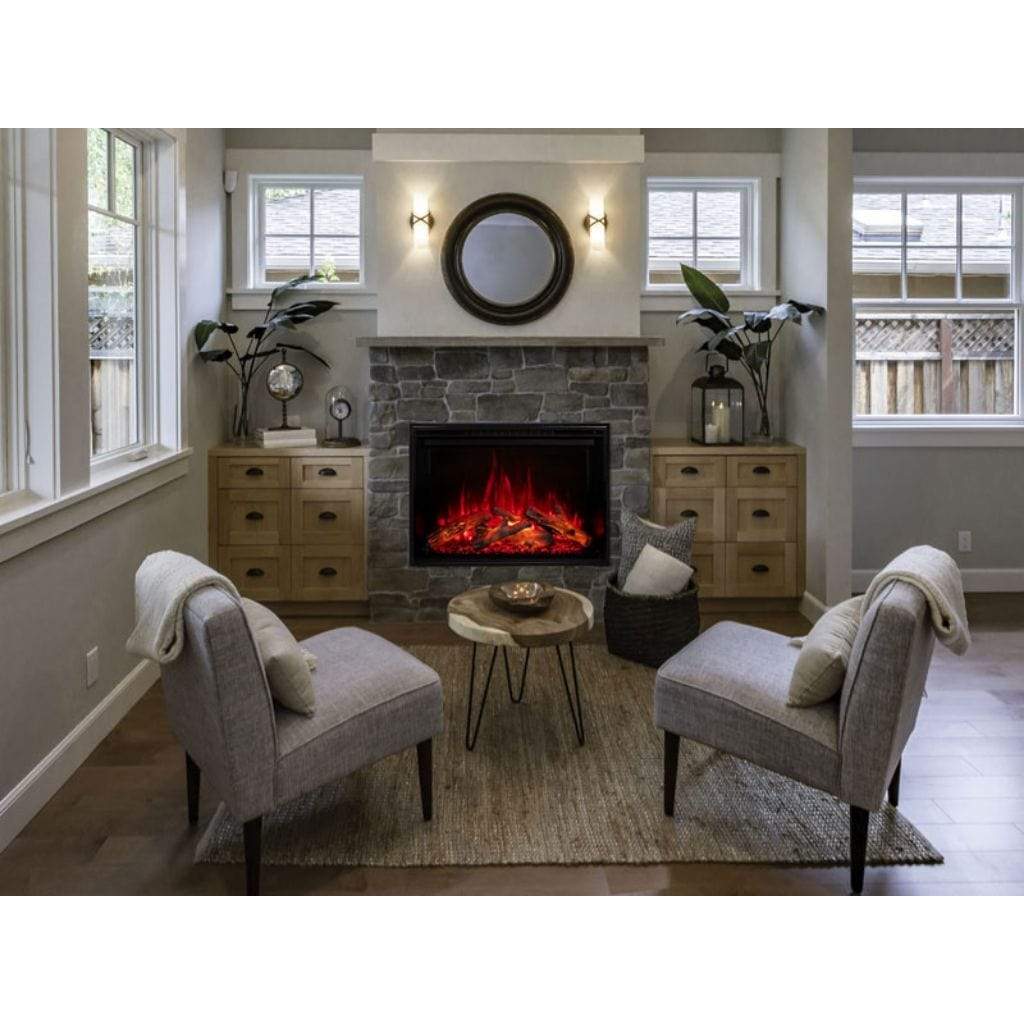
How do gas fireplaces work?
Gas fireplaces are a modern, efficient, and convenient way to enjoy the warmth and ambiance of a fire without the hassle of wood-burning or the complexities of electric units. They’re becoming increasingly popular in homes due to their ease of use, clean burning, and aesthetic appeal. But how exactly do gas fireplaces work? In this blog, we’ll break down the technology behind gas fireplaces, how they operate, and why they’re a great choice for home heating.
1. The Basics of Gas Fireplaces
A gas fireplace is a type of fireplace that burns natural gas or propane to produce a flame. Unlike traditional wood-burning fireplaces, which require wood logs, kindling, and constant maintenance, gas fireplaces are more convenient and cleaner to use. They offer the same cozy atmosphere and warmth, but with the added benefit of being able to turn on or off with the flip of a switch, remote control, or even an app.
Gas fireplaces can be either vented or ventless (also called unvented), depending on the type of system you have. Vented models are designed to vent combustion gases outside, similar to a traditional wood fireplace, while ventless models allow for the combustion gases to remain indoors, which is why they need to be installed in well-ventilated areas.
2. The Key Components of a Gas Fireplace
Gas fireplaces rely on several key components to function properly:
- Gas Supply: The most essential element of any gas fireplace is the fuel source—either natural gas or propane. Gas lines are connected to the fireplace, supplying the fuel that is burned to create the flame.
- Burner: The burner is the component where the gas is ignited and burned. Gas flows through the burner, and when lit, it creates a flame. The burner is usually placed at the base of the fireplace and is designed to distribute the gas evenly for a consistent and realistic flame.
- Ignition System: Gas fireplaces typically have an electronic ignition system that lights the gas when it’s turned on. This system is much safer than traditional pilot lights, which are always on. Modern ignition systems use either a piezoelectric spark (similar to the spark produced when you press the igniter button on a barbecue grill) or an electronic ignition to light the gas when the fireplace is activated.
- Logs or Logs Set (Ceramic or Faux Logs): While real wood logs are not needed, most gas fireplaces come with a ceramic or faux log set. These logs are designed to look like real wood, but they’re made of non-combustible materials that won’t burn. They’re placed strategically in the fireplace to create a natural-looking fire and enhance the aesthetic appeal.
- Flame Effects: Many gas fireplaces feature a variety of flame settings that allow users to adjust the height, color, and style of the flames. Some advanced models even offer realistic flame effects that mimic the look of real wood fires, complete with dancing flames and glowing embers.
- Control System: Gas fireplaces are equipped with a control system that allows users to easily adjust the flame height, temperature, and ignition settings. This control can be manual (a simple knob or switch), or it can be more advanced, such as a remote control, wall switch, or even smartphone app that can control the fireplace remotely.
3. How Gas Fireplaces Produce Heat
Once the gas is ignited, the burner produces a controlled flame. Depending on the type of gas fireplace, the flame will either heat the air directly in the room or warm up a metal heat exchanger that then radiates heat throughout the space.
- Vented Gas Fireplaces: These models are designed to vent combustion gases (like carbon monoxide and water vapor) outside through a chimney or flue. They operate much like traditional wood-burning fireplaces but use gas as the fuel source. Because they vent outside, they provide a more consistent heat without impacting indoor air quality.
- Ventless Gas Fireplaces: These models do not vent the combustion gases outside, which means they can be installed in rooms without a chimney or venting system. Instead, the gases are burned cleanly and are absorbed by the air inside the room. Ventless fireplaces are extremely efficient because they don’t lose heat through a vent, but they should only be used in well-ventilated spaces to ensure proper air quality.
In both cases, the heat generated from the flame is distributed throughout the room. Many gas fireplaces are equipped with fans that help circulate the warm air, which improves the heating efficiency and ensures the room heats up more quickly.
4. Safety Features of Gas Fireplaces
Gas fireplaces are designed with multiple safety features to prevent accidents and ensure proper operation:
- Oxygen Depletion Sensors (ODS): For ventless models, an oxygen depletion sensor is built into the system to monitor the air quality in the room. If the oxygen level drops below a certain threshold, the system will automatically shut off the gas to prevent the buildup of dangerous gases, like carbon monoxide.
- Thermocouple or Thermopile: These devices detect the temperature of the flame. If the flame goes out, the thermocouple or thermopile will immediately shut off the gas supply to prevent a gas leak.
- Overheat Protection: Many modern gas fireplaces come with built-in sensors that shut off the unit if it overheats, preventing any damage or safety hazards.
- Remote Shut-Off: Some gas fireplaces can be equipped with a remote control that allows the user to turn off the unit from across the room, adding an extra layer of convenience and safety.
5. Advantages of Gas Fireplaces
There are many reasons why gas fireplaces have become such a popular choice for homeowners:
- Convenience: Unlike wood-burning fireplaces, which require purchasing and storing wood, setting up a fire, and dealing with ash cleanup, gas fireplaces are incredibly easy to use. Simply turn them on with a remote, wall switch, or app and enjoy the warmth and ambiance instantly.
- Clean and Efficient Heating: Gas fireplaces burn much cleaner than wood-burning fireplaces, producing less smoke and fewer pollutants. They also do not require a chimney or venting system (for ventless models), which means there’s no need to worry about creosote buildup or cleaning out the flue.
- Aesthetic Appeal: Gas fireplaces can create the same cozy, inviting atmosphere as a traditional fire. Many models come with adjustable flame settings, realistic logs, and glowing embers to mimic the look of a real fire.
- Energy Efficient: Gas fireplaces are generally more energy-efficient than wood-burning fireplaces because they do not lose as much heat through a chimney. Even vented models are designed to distribute heat more effectively than traditional open fireplaces.
- Low Maintenance: Since they don’t produce ashes or require wood storage, gas fireplaces are much lower maintenance than their wood-burning counterparts.
6. Conclusion: A Modern Solution for Comfort and Style
Gas fireplaces offer a perfect blend of modern convenience, energy efficiency, and aesthetic appeal. Whether you're seeking a source of heat for a room or simply want to enjoy the beauty of a fire with minimal effort, a gas fireplace can be the perfect solution. They’re easy to install, require minimal maintenance, and provide a clean, safe, and effective way to enjoy the warmth and charm of a fire in your home.
If you’re considering a gas fireplace for your home, be sure to explore both vented and ventless models, as well as various features like flame controls and remote options, to find the perfect one to fit your space and needs.

